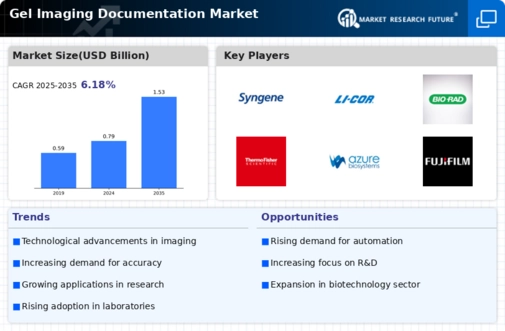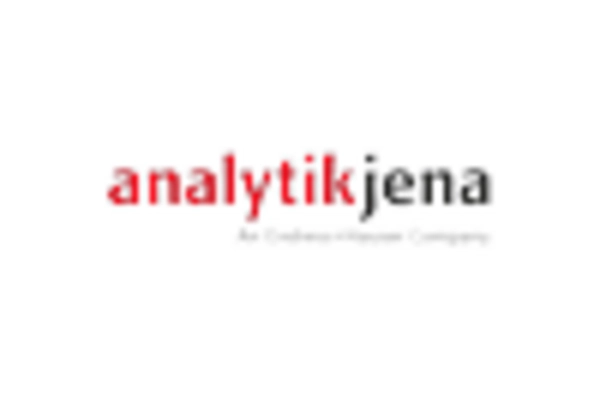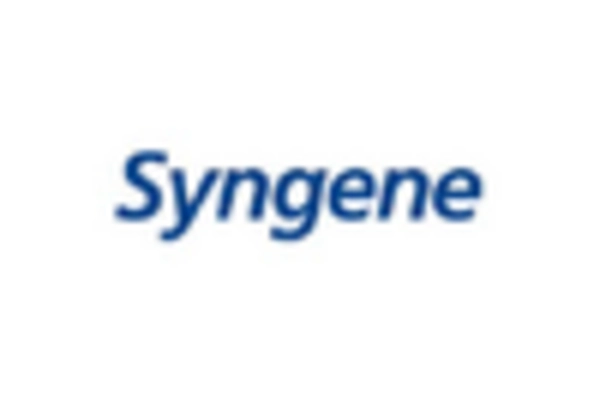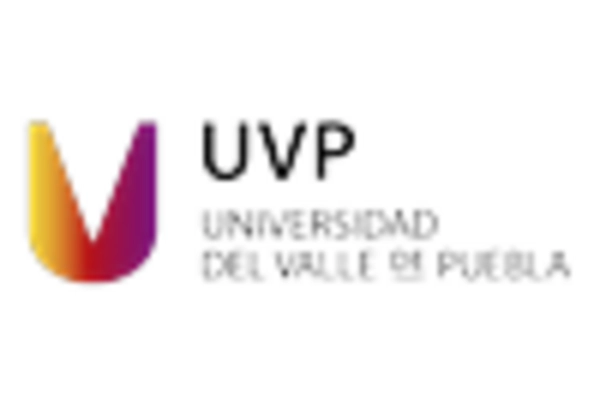Growing Adoption in Clinical Diagnostics
The Gel Imaging Documentation Market is witnessing a surge in adoption within clinical diagnostics, particularly in pathology and microbiology. The increasing emphasis on accurate diagnostic procedures necessitates reliable imaging systems for gel documentation. According to recent data, the clinical diagnostics segment is expected to account for a significant share of the market, driven by the need for precise visualization of electrophoresis results. This trend suggests that healthcare providers are increasingly investing in advanced gel imaging technologies to improve diagnostic accuracy and patient outcomes. As the healthcare sector continues to evolve, the integration of gel imaging systems into routine diagnostic workflows is likely to become more prevalent, further propelling market growth.
Emergence of Advanced Imaging Technologies
The Gel Imaging Documentation Market is significantly influenced by the emergence of advanced imaging technologies. Innovations such as high-resolution cameras, automated imaging systems, and enhanced software solutions are transforming the landscape of gel documentation. These advancements not only improve the quality of images captured but also streamline the documentation process, making it more efficient. The introduction of features like real-time analysis and cloud storage capabilities is expected to attract a broader user base, including academic institutions and research laboratories. As these technologies continue to evolve, they are likely to redefine the standards of gel imaging, thereby fostering growth within the market.
Increased Funding for Research and Development
The Gel Imaging Documentation Market benefits from increased funding for research and development across various scientific fields. Governments and private organizations are allocating substantial resources to support innovative research initiatives, which in turn drives the demand for advanced gel imaging solutions. This influx of funding is particularly evident in biotechnology and pharmaceutical sectors, where the need for precise imaging is critical for drug development and testing. As research institutions expand their capabilities, the demand for high-quality gel imaging documentation systems is expected to rise, indicating a positive outlook for the market. This trend highlights the interconnectedness of funding and technological advancement in shaping the future of gel imaging.
Rising Demand for Molecular Biology Applications
The Gel Imaging Documentation Market is experiencing a notable increase in demand driven by the expanding applications in molecular biology. As research in genetics and genomics progresses, the need for precise imaging solutions becomes paramount. The market is projected to grow at a compound annual growth rate of approximately 7.5% over the next five years, reflecting the increasing reliance on gel imaging for DNA and RNA analysis. Researchers require high-quality documentation systems to ensure accurate results, which in turn propels the demand for advanced gel imaging systems. This trend indicates a shift towards more sophisticated imaging technologies that can cater to the evolving needs of molecular biology, thereby enhancing the overall capabilities of laboratories and research institutions.
Rising Importance of Quality Control in Laboratories
The Gel Imaging Documentation Market is increasingly influenced by the rising importance of quality control in laboratories. As regulatory standards become more stringent, laboratories are compelled to adopt reliable imaging systems that ensure compliance with quality assurance protocols. The need for accurate and reproducible results is driving the demand for advanced gel imaging documentation solutions. This trend is particularly relevant in pharmaceutical and clinical laboratories, where the integrity of data is paramount. The emphasis on quality control not only enhances the credibility of research findings but also fosters trust among stakeholders. Consequently, this focus on quality is likely to propel the growth of the gel imaging market as laboratories seek to implement robust documentation systems.

















Leave a Comment